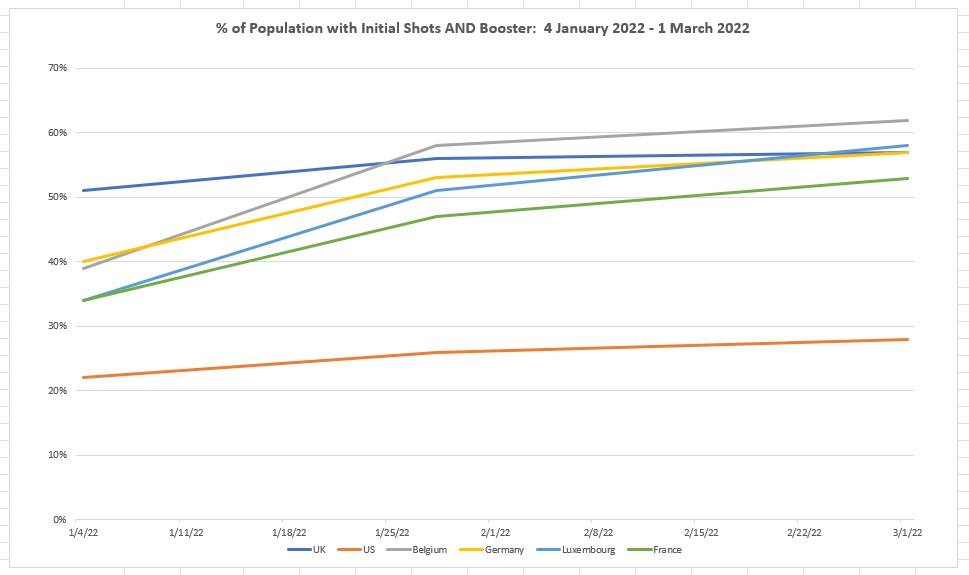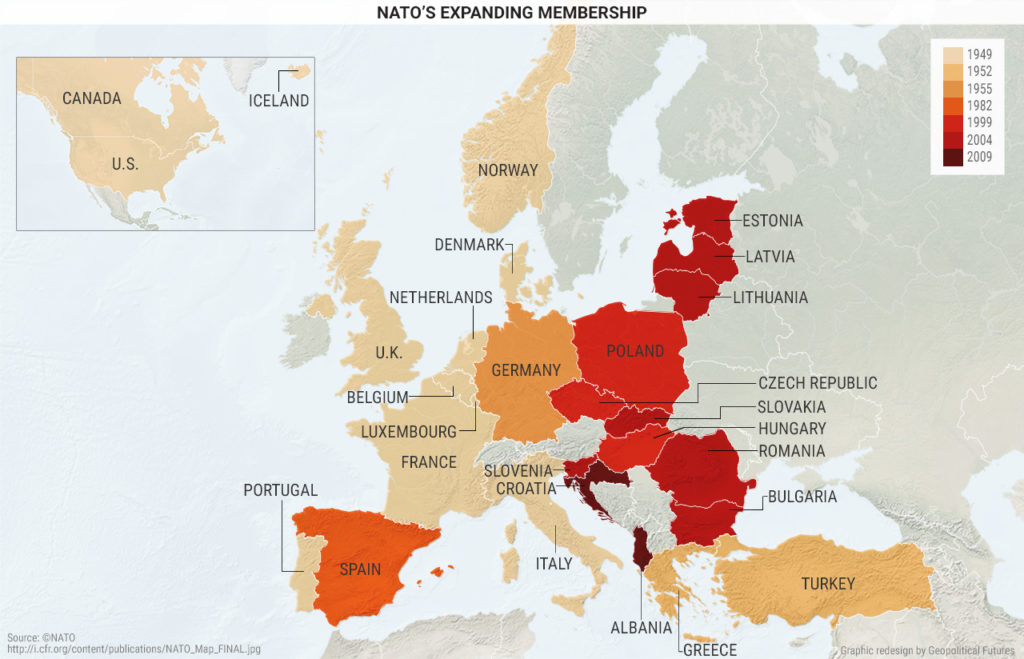Overcome your travel fears. It’s time to go back to Europe! Here is why: First, after dealing with the Omicron variant of Covid-19 European Countries ARE NOW LOOSENING restrictions once again. Second, the conflict in the Ukraine is a local conflict, with virtually no chance of it spreading to Western Europe. We’ll explain our position on both of these issues in this article. Nevertheless, Americans’ reluctance to travel means that aircraft and tourist locations are much less crowded than normal.
Omicron is on the Way Out.
Let’s start with Omicron: Since late fall 2021 Americans have been fed a litany of negative headlines about EU countries tightening restrictions on their citizens as well as on visitors. This was done, of course, to push as large a percentage of the population to fully vaccinate (first shots + booster) themselves and to prevent the strain on the healthcare industry. Europe is now coming out of the other side of the Omicron spike; with a very large percentage of people boosted and with much broader exposure to Covid-19. As a result, European countries are now relaxing travel restrictions—for those people who are fully-vaccinated. (It is a very different story for the unvaccinated.)

On 12 February France eliminated the need for fully vaccinated adults to have a Covid-19 test in order to enter the country. Also, on 28 February France reduced some, but not all, of its mask wearing requirements.
At the time of this writing travelers to Belgium from the United States need to show a “vaccine certificate” or “recovery certificate” in order to enter the country with no test or quarantine requirements. Lacking one of those, they need a “test certificate” showing the negative results of a PCR test within the last 72 hours or a rapid antigen test withing the last 24 hours. If entering with a “test certificate,” travelers need to get tested on day one and remain in quarantine until the results are known.
Adult travelers to Germany must likewise be fully vaccinated. Unvaccinated travelers may only enter Germany as the result of an urgent need.
Luxembourg requires travelers to present proof of vaccination or a recovery certificate. Unvaccinated individuals can enter only if their travel is considered essential travel.
Could another variant arise, prompting EU countries to again apply the brakes? Perhaps, but the recent exposure and the increase in vaccination rates should be making future Covid-19 variants less deadly overall. This sentiment is echoed in this portion of an official German press release from 1 March 2022:
“With the widespread occurrence of the Omicron variant, the probability of this variant to have a severe course is shown to be less compared to the previous prevalent variants. Therefore, as of Thursday, March 3, 2022 at 0:00 a.m., no states/regions will be considered as high-risk areas with the “Third Amendment to the Coronavirus Entry Regulation” coming into force.
The Designation as a high-risk area will only be made for those areas where there is a high incidence in terms of the spread of variants with higher virulence, compared to the Omicron variant. Thus, countries/areas will no longer be classified as high-risk areas based on the spread of the omicron variant.
The classification of risk areas can still change at short notice. Please check immediately before departure whether the countries in which you have stayed in the last 10 days before entering Germany are classified as risk areas”
As always, we instruct our readers to check the Covid requirements on a government website for EACH country you anticipate visiting; and continue to check them and staying on top of the news prior to departure.
We Believe the Ukraine will Remain a Local Conflict.
Let’s put the Ukraine in some 20th and 21st century historical context: In no way do we approve of Putin’s efforts to restrict a sovereign country from determining its own future; but we do understand the fact that the disappearance of Russia’s security buffer has been bothering an old-school oligarch like Putin for some time. The map below shows the former East-Bloc countries and the time frame in which they joined NATO after the East-Bloc fell. Only Belarus and the Ukraine—both part of the old USSR—have not been “allowed” to determine their futures independently of Russia; and the Ukraine has been drifting closer to the West. In 2014 Putin got away with annexing the Crimea. Given that history, Europe’s reluctance for war, China’s and North Korea’s aggressiveness, and a divided United States, he calculated that he could get away with it again. The events of the last week showed that he was wrong—because all his neighbors fear they will be next if he is allowed to interfere in the Ukraine.

Because all of the surrounding neighbors are now NATO members, we believe this military conflict will remain localized. Could there be repercussions in Western Europe? Yes, but limited. Europe is already feeling it in terms of energy prices and an inflow of refugees from the Ukraine. Russian hackers could hit sensitive business and government websites, and there could be some other forms of harassment. But we find it hard to believe that Mr. Putin would risk a direct conflict with NATO.
2016 All Over Again
Americans quit traveling to Europe in 2016, following the Charlie Hebdo assassinations and the mass shootings in two Paris night clubs in 2015. Those Americans who traveled to Europe in 2016 enjoyed a vacation that was not full of tourists and long waiting times. It’s time to put away your travel fears once again!
At Knee Deep Into History we are offering 2022 tours to Normandy, the Ardennes, the Meuse-Argonne, Verdun and Flanders Fields and the Somme. We invite you to tour our schedule and offerings at kneedeepintohistory.com and join us in the field for an unforgettable battlefield tour.
#kneedeepintohistory #kdih #battlefieldtours #ww1battlefieldtours #ww2battlefieldtours #meuse-argonne

Leave a Reply